Building your dream home is an exciting journey, but it requires careful planning and consideration of various factors to ensure a successful outcome. From soil testing to selecting the right building materials and designing the perfect floor plans, several key aspects need to be addressed before construction begins. At Neev Pathar Architects & Interior Designers in Ludhiana, we specialize in creating custom-designed homes that reflect our clients' unique needs, preferences, and lifestyle. In this comprehensive guide, we'll delve deeper into each factor to help you make informed decisions for your dream home project.
Soil Testing

Understanding Soil Conditions
Before laying the foundation of your house, it's crucial to conduct thorough soil testing to assess its stability, bearing capacity, and composition. Different types of soil have varying load-bearing capacities, which can significantly impact the design and construction of your foundation. Soil testing helps determine the appropriate foundation type, whether it's shallow foundations like spread footings or deep foundations like piles or piers, ensuring the structural integrity of your home.
Soil testing also reveals any potential issues such as expansive soil, high water table, or presence of contaminants, allowing for proper mitigation measures to be implemented during construction. Engaging a qualified geotechnical engineer to perform soil testing and analysis is essential to ensure a strong and stable foundation for your house.
Proper Floor Plans, Plumbing, Electrical & Structural Drawings from Architect

Importance of Detailed Drawings
Collaborating with an experienced architect to develop detailed floor plans, plumbing layouts, electrical plans, and structural drawings is crucial for a smooth construction process. These detailed drawings serve as a roadmap for the entire construction project, guiding contractors and tradespeople in the execution of various tasks.
Floor plans depict the layout and spatial arrangement of rooms, ensuring optimal functionality and flow within the house. Plumbing layouts specify the placement of fixtures such as sinks, toilets, and showers, ensuring efficient water distribution and drainage. Electrical plans detail the location of outlets, switches, and lighting fixtures, ensuring adequate electrical supply and safety. Structural drawings outline the design and specifications of load-bearing elements such as beams, columns, and walls, ensuring structural stability and compliance with building codes and regulations.
By providing clear and comprehensive drawings, architects facilitate effective communication and coordination among all stakeholders involved in the construction process, minimizing errors, delays, and cost overruns.
Plinth Beam Height from ground level

Ensuring Proper Elevation
The plinth beam, also known as the tie beam or bond beam, is a reinforced concrete beam constructed at ground level to provide lateral support to the walls of the building. The height of the plinth beam from ground level is a critical consideration during the construction of your house.
Ensuring the proper elevation of the plinth beam helps protect the structure from moisture, water ingress, and damage caused by flooding or groundwater seepage. The plinth beam acts as a barrier against rising damp and prevents the transfer of moisture from the ground into the walls, ensuring the longevity and durability of the building.
The height of the plinth beam should be determined based on site-specific factors such as soil type, groundwater level, and local climatic conditions. Consulting with a structural engineer or architect can help determine the optimal height of the plinth beam to meet your specific requirements and ensure the structural integrity of your house.
Selection of Right TMT Bars & Cement
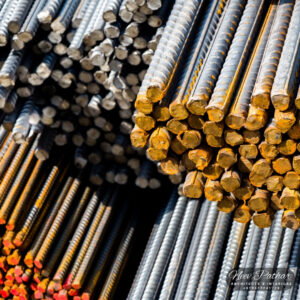
Choosing Quality Construction Materials
Selecting the right construction materials is essential for the strength, durability, and longevity of your house. Two critical materials to consider are TMT (Thermo-Mechanically Treated) bars and cement.
TMT bars are commonly used in reinforced concrete structures to provide tensile strength and support against bending and shearing forces. When selecting TMT bars for your house, consider factors such as grade, diameter, and manufacturer reputation. Higher-grade TMT bars offer superior strength and corrosion resistance, making them ideal for use in areas prone to seismic activity or harsh environmental conditions. Additionally, choose TMT bars from reputable manufacturers known for their quality and consistency to ensure the structural integrity of your house.
Similarly, the quality of cement used in construction significantly impacts the strength and durability of the concrete. Opt for high-grade cement from trusted brands that adhere to national or international quality standards. Consider factors such as compressive strength, setting time, and resistance to chemical attack when selecting cement for your construction project.
By choosing the right TMT bars and cement, you can ensure the structural integrity and longevity of your house, protecting your investment for years to come.
Termite Treatment
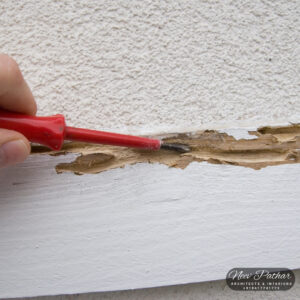
Preventing Pest Infestation
Termite infestation can cause significant damage to wooden structures and fixtures in your house, compromising its structural integrity and safety. To prevent termite infestation and protect your home from damage, it's essential to incorporate termite treatment measures during construction.
Pre-construction termite treatment involves applying chemical barriers or treating the soil to create a protective barrier against termite intrusion. This proactive approach prevents termites from entering the structure and eliminates the risk of infestation, saving you time, money, and hassle in the long run.
Consulting with a pest control expert or termite specialist can help determine the most effective termite treatment method for your construction project and ensure comprehensive protection against termite damage.
Selection of Building Material
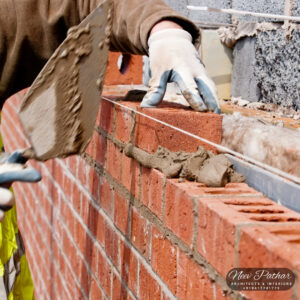
Evaluating Building Material Options
The choice of building materials significantly influences the structural integrity, energy efficiency, and aesthetic appeal of your house. Several options are available for constructing walls, including traditional red clay bricks, cement blocks, hollow concrete blocks, AAC (Autoclaved Aerated Concrete) blocks, fly ash bricks, and cement bricks.
Red clay bricks are a popular choice for their durability, thermal insulation properties, and natural aesthetic. Cement blocks, also known as concrete blocks or cinder blocks, offer excellent strength and stability, making them suitable for load-bearing walls. Hollow concrete blocks provide thermal insulation and soundproofing benefits, ideal for external walls and partitions.
AAC blocks are lightweight, precast concrete blocks made from aerated concrete, offering superior thermal insulation and fire resistance properties. Fly ash bricks are eco-friendly alternatives to traditional clay bricks, made from fly ash, a byproduct of coal combustion. Cement bricks are versatile and durable, suitable for various construction applications.
When selecting building materials for your house, consider factors such as strength, durability, thermal insulation, acoustic performance, and environmental impact. Consult with your architect or builder to evaluate the pros and cons of each material and choose the most suitable option based on your specific requirements and budget.
Front Elevation Design
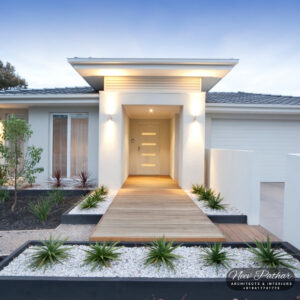
Enhancing Curb Appeal
The front elevation of your house is the first impression visitors and passersby will have of your home, making it essential to design a visually appealing and welcoming facade. The front elevation design should reflect your personal style preferences, architectural theme, and the surrounding environment while enhancing the overall curb appeal of your house.
Consider elements such as architectural style, facade materials, roof design, windows, doors, and landscaping features when designing the front elevation. Incorporate decorative elements, such as columns, arches, balconies, or decorative trim, to add character and charm to the facade.
Balancing aesthetics with functionality is key to creating a front elevation that not only looks beautiful but also enhances the usability and livability of your home. Work closely with your architect or designer to develop a front elevation design that complements the overall architectural vision of your house and creates a lasting impression.
Selection of Windows and Doors
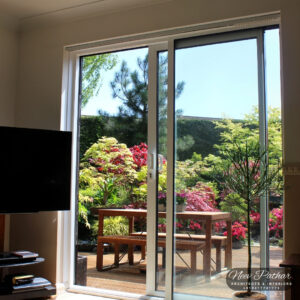
Balancing Functionality and Style
Windows and doors play a crucial role in providing natural light, ventilation, security, and visual connectivity within your house. Choosing the right windows and doors involves balancing functionality, aesthetics, energy efficiency, and durability to meet your specific needs and preferences.
Several materials are available for windows and doors, including wood, iron, aluminum, and UPVC (Unplasticized Polyvinyl Chloride). Each material has its advantages and considerations in terms of durability, maintenance, insulation, and cost.
Wooden windows and doors offer timeless elegance and warmth, making them popular choices for traditional and rustic-style homes. Iron doors provide unparalleled strength and security, ideal for external entry points requiring maximum protection. Aluminum windows and doors are lightweight, durable, and low-maintenance, offering excellent thermal insulation and design versatility. UPVC windows and doors are energy-efficient, weather-resistant, and require minimal upkeep, making them suitable for modern and contemporary-style homes.
Consider factors such as climate, location, architectural style, budget, and personal preferences when selecting windows and doors for your house. Consult with your architect or window and door supplier to explore different options and choose the most suitable ones that meet your requirements and complement the overall design of your home.
Air Exhaust Points
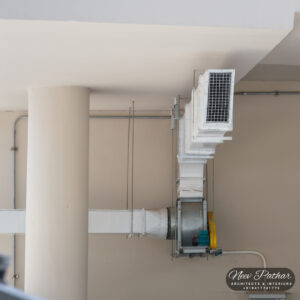
Ensuring Proper Ventilation
Proper ventilation is essential for maintaining indoor air quality, controlling humidity levels, and preventing condensation, mold growth, and indoor air pollutants. Incorporating air exhaust points strategically throughout your house helps facilitate airflow, remove stale air, and expel moisture and pollutants from enclosed spaces.
Identify key areas in your house that require ventilation, such as kitchens, bathrooms, utility rooms, and enclosed spaces with poor air circulation. Install exhaust fans or vents in these areas to remove excess moisture, cooking odors, and indoor pollutants effectively.
Position exhaust points near sources of moisture and pollutants, such as cooking appliances, sinks, showers, and toilets, to ensure efficient ventilation and prevent moisture buildup and air stagnation. Use energy-efficient exhaust fans with adjustable speed settings and automatic sensors to optimize airflow and energy consumption.
Consult with your architect, mechanical engineer, or HVAC (Heating, Ventilation, and Air Conditioning) specialist to design a ventilation system that meets the ventilation requirements of your house and complies with building codes and regulations. Consider factors such as airflow rates, ductwork design, noise levels, and energy efficiency when planning your ventilation strategy to create a healthy, comfortable, and sustainable indoor environment.
Position of Air Conditioners

Optimizing Cooling Efficiency
The proper placement of air conditioners is essential for optimizing cooling efficiency, airflow distribution, and energy savings within your house. Positioning air conditioners strategically helps minimize heat gain, reduce energy consumption, and enhance indoor comfort levels for occupants.
When determining the location of air conditioners, consider factors such as room layout, solar orientation, insulation levels, and airflow patterns. Install air conditioners away from heat sources, direct sunlight, and obstacles that obstruct airflow, such as furniture, curtains, and partitions.
Place air conditioners centrally within each room or zone to ensure even cooling and airflow distribution throughout the space. Avoid placing air conditioners near doors, windows, or openings where cool air can escape or hot air can infiltrate, compromising the effectiveness of the cooling system.
Consider using energy-efficient air conditioners with programmable thermostats, variable-speed compressors, and zoning capabilities to optimize cooling performance, reduce energy consumption, and enhance comfort control. Consult with your HVAC designer or mechanical engineer to design a ducted or ductless cooling system that meets your cooling requirements, budget, and sustainability goals while ensuring proper placement and installation of air conditioning units.
Provision for Solar Panels and Solar Water Heaters
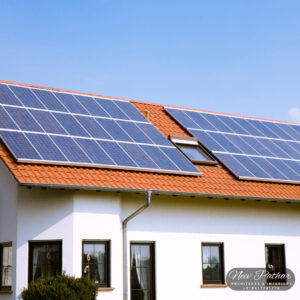
Embracing Sustainable Energy Solutions
Incorporating provisions for solar panels and solar water heaters during the construction phase allows for easy integration of renewable energy systems in the future, reducing reliance on conventional energy sources and lowering utility costs. Solar panels harness sunlight to generate electricity, while solar water heaters use solar energy to heat water for domestic use, space heating, and swimming pools.
Identify suitable locations on the roof or property for installing solar panels and solar water heaters, considering factors such as solar exposure, shading, roof orientation, and structural integrity. Orient solar panels to face south or southwest to maximize solar exposure and electricity generation potential throughout the day.
Designate dedicated spaces or here equipment rooms to accommodate solar inverters, batteries, and other system components, ensuring proper ventilation, access, and maintenance. Coordinate with your architect, electrical engineer, or solar installer to incorporate wiring, conduits, and mounting hardware into the construction plans, streamlining the installation process and minimizing retrofitting costs.
Consider incorporating passive solar design strategies, such as orienting the house for optimal solar exposure, maximizing natural daylighting, and minimizing heat gain and loss through proper insulation, shading, and fenestration. Integrating solar-ready features and infrastructure during construction allows for seamless integration of solar energy systems in the future, providing long-term energy savings, environmental benefits, and energy independence for your home.
Direction of House

Harnessing Natural Elements
The orientation of your house relative to the sun, wind, and natural surroundings has a significant impact on its energy efficiency, comfort, and environmental performance. Properly orienting your house allows you to harness natural elements such as sunlight, wind, and views to enhance passive heating, cooling, lighting, and ventilation, reducing energy consumption and enhancing indoor comfort.
Consider the local climate, prevailing winds, solar path, and topography when determining the orientation of your house on the site. Orient the house to maximize solar exposure on the south-facing facade for passive solar heating during the winter months while minimizing solar gain on the east and west facades to reduce overheating and glare during the summer months.
Position windows, doors, and outdoor living spaces to capture desirable views, promote natural ventilation, and create comfortable indoor-outdoor connections. Use landscaping elements such as trees, shrubs, and hedges to provide shade, buffer against wind, and enhance privacy around the house.
Incorporate design features such as overhangs, awnings, louvers, and trellises to control solar gain, diffuse sunlight, and optimize daylighting throughout the house. Use high-performance glazing, insulated frames, and thermal breaks in windows and doors to minimize heat transfer and improve energy efficiency.
By strategically orienting your house and incorporating passive design strategies, you can create a comfortable, energy-efficient, and sustainable living environment that harmonizes with the natural elements and enhances your quality of life.
Conclusion
Building your dream home is a significant undertaking that requires careful planning, attention to detail, and collaboration with experienced professionals. By considering key factors such as soil testing, proper drawings, construction materials, termite treatment, building material selection, front elevation design, window and door selection, ventilation, air conditioning, solar provisions, and orientation, you can ensure a successful and rewarding construction experience.
At Neev Pathar Architects & Interior Designers in Ludhiana, we specialize in creating custom-designed homes that reflect our clients' unique needs, preferences, and lifestyle. Our team of architects, engineers, and designers is committed to delivering innovative, sustainable, and timeless designs that exceed expectations and create lasting value for our clients.
Contact us today to discuss your dream home project and experience the expertise and creativity of the best architects and interior designers in Ludhiana. Let us turn your vision into reality and create a home that inspires, delights, and enriches your life for years to come.
Name : Neev Pathar Architects & Interior Designers
Address : First Floor, B-23, 1702/1 Link Road, Janakpuri, near Cheema Chowk, Ludhiana, Punjab 141003
Phone : +91-9417741779
Website : https://neevpathar.in/
Email : [email protected]
Instagram : https://www.instagram.com/neevpathar/
Facebook: https://www.facebook.com/neevpathar/
Twitter : https://www.twitter.com/neevpathar/
Google Page: https://g.page/neevpathar
Google Business Site: https://neevpathar.business.site/
Comments on “Key Factors to Consider Before Construction of House by Neev Pathar Architects in Ludhiana”